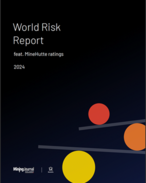This article is 9 years old. Images might not display.
The DAE-CME November 2015 Economic Outlook report said the state’s economy was forecast to grow by 2.4% in 2015-16, which is less than half the rate of growth noted in 2013-14 and the slowest rate of growth recorded in the state since the 1991 recession.
Deloitte anticipates economic growth will maintain its pace in 2015-16, before stepping up to 3.9% in 2016-17.
As seen in 2015, the diminishing resources investment pipeline is expected to reduce activity in the state and add pressure to a limp labour market.
While production of resource commodities has lifted, prices remain at decade low levels and continue to fall, with the Reserve Bank of Australia’s commodity price index falling 29.6% in the 12 months ending August.
However, all six major mineral classes experienced a growth in production in the June 2015 quarter.
Manganese production increased by 8% after a 10.8% decline in the March quarter.
Production of the iron ore by-product has grown strongly in recent years, in line with iron ore production.
Gold production was up by 5.3%, but down 2.6% from the same quarter last year.
Nickel production was up 4.3% in its first quarter of growth since June 2014.
Bauxite production grew 4%, largely retracing the 6.4% decline recorded in the March quarter.
Demand for Australia’s seaborne bauxite is expected to grow strongly in the next few years, following an export ban in Indonesia and strong demand for alumina in major Asian markets.
Bauxite miner Alcoa has also recently announced plans to structurally separate its high-end manufacturing business from its downstream operations.
Iron ore production was up 2.8%, and is expected to continue to increase, with Hancock Prospecting’s Roy Hill project on the verge of FOOS.
Copper production was also up in the June quarter, sitting at 3.7% following a 4.9% drop in March.
While copper is mined in five of Australia’s six states, WA was the only major producing state to record growth in the June quarter.
The obstinacy of weak commodity prices has left export earnings under pressure with returns down 23% compared to a year ago.
Total Western Australian export earnings fell by $3.9 billion, or 14.1%, to $23.8 billion over the June quarter 2015.
Iron ore export earnings were down 5%, and iron ore export receipts declined by 29.3% ($4.9 billion).
Earnings from gold exports fell by 31.1% over the June quarter 2015, offsetting the significant increase experienced in the March quarter 2015 (21.3%).
This represents an annual decline of 7.8% in total export earnings, or $219.9 million, since the June quarter 2014.
Nickel export earnings fell by $9 million, or 6.4%, over the June quarter 2015.
In annual terms, nickel export earnings are down 31.4%, coming off relatively high values during the second half of 2014.
Deloitte senior analyst Josh Copcutt warned the weakness in commodity prices remained the dominant driver of the continued decline in Western Australia’s resources export earnings.
“Although production of many commodities has increased as major investments in capacity expansion bring new production online, downward pressure has been placed on margins as a result of price declines,” he said.
“Companies have responded by embarking on a range of cost-cutting measures in an effort to increase productivity and ensure projects remain viable in the current price environment.
“The changes experienced by the resources sector are also having an impact on the broader economic outlook for Western Australia.”
Meanwhile, exploration activity has also suffered, with lower prices leading to reduced confidence for investors.
Minerals exploration costs fell 12.1% ($26.6 million) relative to the March quarter of 2015 (in trend terms), and now stands at its lowest level since September 2006.
These costs are about 66% lower than the $557.2 million peak recorded in the 2012 March quarter.
Expenditure on gold exploration increased 20.2% ($13.6m) for the third consecutive quarter as conditions in the sector continued to improve.
Iron ore exploration made up ground on its 47% decrease in the March quarter, rising 6.3%.
Nickel and copper exploration was especially weak in a reflection of challenging market conditions.
Greenfields exploration declined 34% in the 2014-15 financial year, the lowest level since 2003-04.
Weak sentiment and the low commodity price environment have continued to squeeze the value out of Western Australian listed companies, with the Deloitte WA Index falling 22% over the past 12 months.
The total market capitalisation of the top 50 WA companies stands at $118.5 billion, the lowest level since the aftermath of the GFC.























